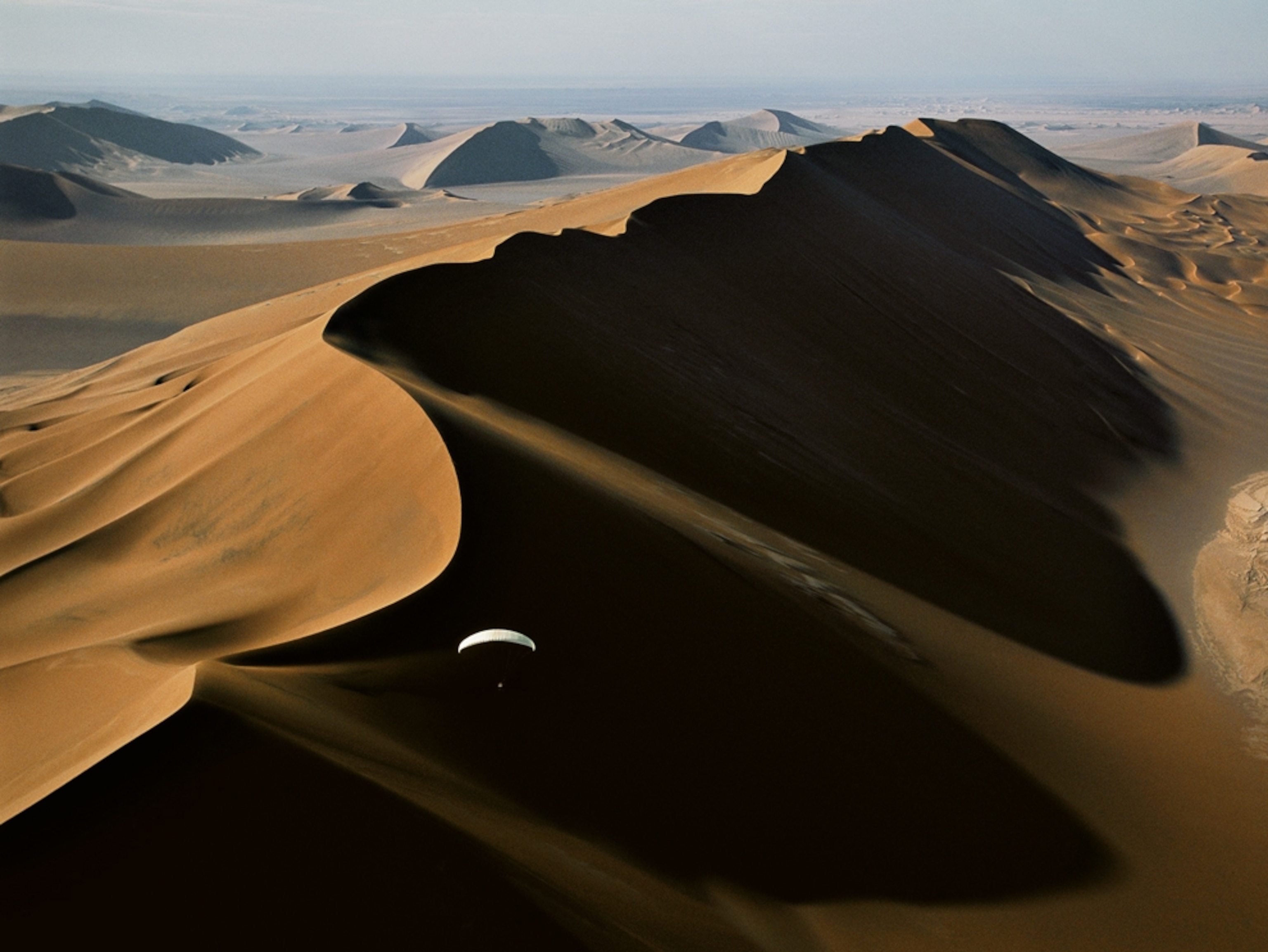
Singing Sand Dunes Explained
Sand grain size dictates how dunes whistle, study finds.
When Marco Polo heard it in China, he suspected evil spirits. When residents of Copiapo, Chile, heard it emanating from a sandy hill, they dubbed the peak El Bramador, for its roars and bellows.
Scientists today call it "singing sand," but they're all referring to the same thing: As sand grains shuffle down the slopes of certain sand dunes, they produce a deep, groaning hum that reverberates for miles.
But how these dunes produce this "music" remains a much debated mystery. Another vexing question is why different dunes sing different tunes—and how can some even sing more than one note at a time?
Enlarge picture of sand dunes >>

A trio of Parisian biophysicists think they know the answer. It's not necessarily the motion of the sandy ocean that determines the pitch of the note—it's the size of the grains, though why the size matters is still unknown.
The researchers first tracked down a pair of singing dunes, one in Morocco, the other in Oman. Working literally by the seat of their pants, they scooted feet-first down the hills to trigger the avalanches. They found that, while the Moroccan hill moaned at a steady 105 Hz—or a low G sharp—the Omani dunes sang a nine-note blare that ranged from 90 to 150 Hz.
Listen to Sand Dunes Sing
With the sounds identified, the team packed their suitcases with 110 pounds (50 kilograms) of Moroccan sand and 220 pounds (100 kilograms) of Omani sand and hauled them back to their lab at Paris Diderot University. "If you want to make it sing, you need a lot," noted study leader Simon Dagois-Bohy.
(Related: "Why Sand Dunes Go Boom.")
Making Mini-Avalanches
In the lab, the team recreated the avalanches in miniature, analyzing the speed, depth, and makeup of the cascades. As it turns out, the one-note Moroccan sand grains are almost entirely the same size—160 millionths of a meter, or microns across—but the noisy Omani sands run the gamut, from 150 to 300 microns.
But when the messy sands were sieved down to just the 200-to-250 micron particles, the tone cleared into a single tone. "The size of the grain controls the actual sound," Dagois-Bohy concluded.
Why exactly this happens, and how the sound itself is created, is still uncertain. However, the Parisian group suspects that, during an avalanche, grains of sand move together down the dune—each grain colliding with and rolling around its neighbors, creating a constant stream of collisions. Larger grains of sand move around each other at slower rates, and vice versa for smaller grains.
(Also see: "Global Warming May Unleash 'Sand Seas' in Africa, Model Shows.")
Each bump makes a shock that, on its own, would be all but inaudible. But add them together in the right conditions, said study co-author Stéphane Douady—and the team is still working out what those precise conditions actually are—and you get "the sound of millions of little shocks."
The singing-dunes study was published October 26 in the journal Geophysical Research Letters.





